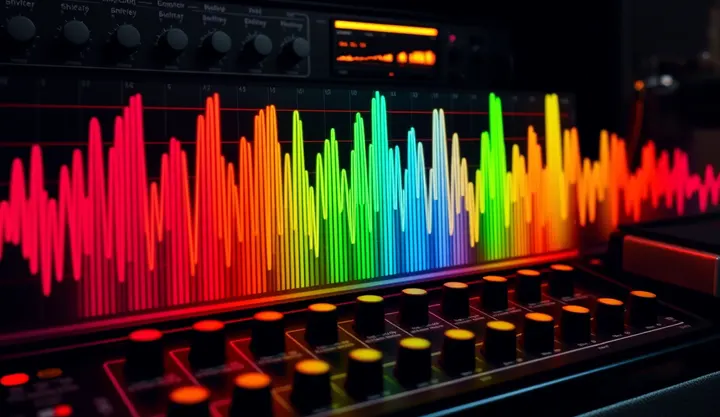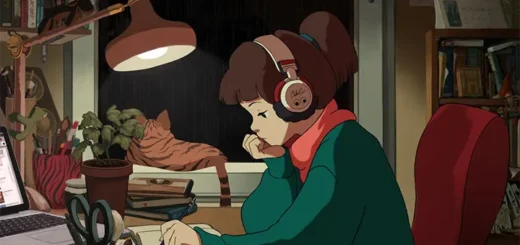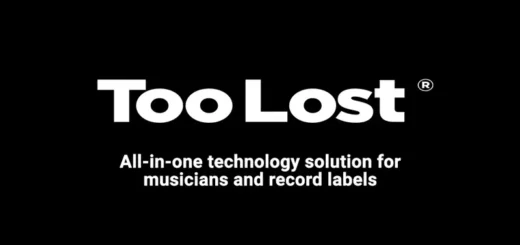What is Saturation in Music Production?

Saturation is an audio effect that distorts a signal as it passes through analog components, adding “color” and “character” to the sound. Historically, this occurred when analog gear like magnetic tape, vacuum tube amplifiers, or transistors were overdriven (sent a signal that was too loud). In digital music production, saturation is emulated through plugins that replicate these effects. It generally compresses the signal subtly, reducing the dynamic range between loud and quiet parts, and adds flavorful extra harmonics, which can be even or odd depending on the type of saturation.
How does saturation differ from distortion?
While closely related, saturation is often described as a gentler form of distortion. Saturation primarily adds harmonic frequencies (multiples of the fundamental frequency), contributing to a perceived “warmth” or “richness” without making the audio sound overtly “distorted.” Distortion, on the other hand, can add more non-harmonic frequencies, leading to a more aggressive or destructive sound. Saturation can be thought of as a soft overdrive, subtly thickening the sound.
What are the main benefits of using saturation in a mix?
Saturation offers several significant benefits in music production:
Adding Warmth and Thickness: It can make sounds, especially bass, feel fuller and more inviting by adding upper harmonics, particularly second-order harmonics (often associated with tube saturation) that enhance low-mids.
Creating Depth and Texture: Saturation can “glue” elements together, making them sound more cohesive. It can also bring forward subtle details in a mix, making sounds more lively and vivid.
Emulating Analog Sounds: It helps replicate the pleasing character and imperfections of vintage analog gear, giving digital recordings an authentic “analog flavor.”
Enhancing Presence and Clarity: For vocals, saturation can make them sound “present and crisp,” improving intelligibility and richness without harshness. It can also make sounds appear “closer” in a mix.
Increasing Perceived Loudness: By gently compressing the signal and adding harmonics, saturation can make sounds punch through the mix and seem louder without necessarily increasing their peak volume. This is particularly useful for elements like 808s in hip hop.
What are common types of saturation?
The three most common types of saturation are:
Tape Saturation: Emulates the sound of audio signals being recorded onto magnetic tape, often characterized by a “gluey,” “tubby,” and “smushy” sound, and can enhance highs and lows.
Tube Saturation: Simulates the effect of vacuum tube amplifiers being overdriven, known for adding warmth and often second-order harmonics, contributing to a rich, full sound.
Transistor Saturation: Mimics the saturation caused by transistors in audio hardware, each with its own unique “flavor” when pushed.
These types of saturation are often implemented in dedicated plugins that aim to accurately model the characteristics of their analog counterparts.
How can I experiment with saturation effectively in my music?
To effectively learn and apply saturation:
Exaggerate the Effect: Start by “overdoing it” – turn the saturation knobs up to 10 or to their maximum. This allows you to clearly hear what the effect is doing to the sound. Once you understand the tonal change, gradually dial it back until it sounds pleasant and subtle.
Visualize the Harmonics: Use a spectrum analyzer after the saturation plugin (or in a DAW like Ableton with a dry/wet rack) to observe how it adds and moves harmonics as you increase the “wet” level. This is best done with simple, steady-state signals like sine waves.
Apply Judiciously: Subtlety is key with saturation. It’s easy to overdo it, which can make a mix sound messy. It’s a bonus technique, not a fundamental one, and should be used with intention within the context of the entire mix.
Consider Placement in the Chain: While there’s no strict rule, a common practice for vocals is to place saturation after EQ and compression, but before special effects like modulation and reverb, to avoid unexpected interactions.
Experiment on Different Elements: Try saturation on individual tracks (like snares, bass, vocals), group buses (drums, vocals), or even the entire mixbus to see its various impacts.
What is Slate Digital’s “Fresh Air” plugin and what are its notable features?
Slate Digital’s “Fresh Air” is a dynamic high-frequency processor designed to add brilliance and clarity to audio without harshness. It features a simple interface with just two main knobs:
Mid Air: Enhances details in the mid-high frequency range (around 3 kHz and above), adding presence and clarity (up to +6 dB).
High Air: More aggressively affects high frequencies (around 7 kHz and above), adding a “pop sparkle” or “brilliance” (up to +9 dB), typically used with a lighter touch.
There’s also a “Trim” knob for gain compensation. The plugin is based on vintage exciter circuits and advanced dynamics processing, making vocals “present and crisp,” and can be used on individual tracks, groups, or the entire mix.
What are the common challenges or downsides associated with the Fresh Air plugin?
Despite its effectiveness, Fresh Air has a few notable downsides, primarily related to its licensing and resource requirements:
iLok Validation System: It uses the iLok system for license authorization, which some users find “annoying” to set up.
Online Requirement: A major complaint is that Fresh Air requires an internet connection for license validation, which can be problematic for live rigs or offline work. Projects using Fresh Air may not load if an internet connection is unavailable.
iLok Dongle Issues: Historically, users have expressed frustration with physical iLok USB dongles (losing them, breakage, being mistaken for flash drives), although iLok Cloud offers an alternative.
Resource Consumption: The iLok system itself can consume computer resources.
Ease of Overuse: Because the plugin can sound good, users might “overdo” the effect, leading to an overly bright or harsh mix if moderation is not applied.
Are there free alternatives to Slate Digital’s Fresh Air and other saturation plugins?
Yes, there are several free and open-source alternatives to Fresh Air and other saturation plugins available for music producers, often discussed in online communities:
Fresh Air Alternatives:
- Roth-Air: An open-source alternative found on GitHub, though it can be challenging to compile and may have issues with preset loading.
- Exciter + EQ Combo: A general recommendation to achieve similar high-end enhancement using stock DAW plugins.
- OTT (Xfer Records): While primarily a multi-band compressor, pushing it to its limits can achieve a saturated/distorted effect.
General Free Saturation Plugins:
- Klanghelm IVGI: Highly praised for its quality, often used on the mixbus.
- Softube Saturation Knob: A popular one-knob saturator with three modes, though it can significantly raise volume and may require a plugin manager for installation.
- MSaturation by MeldaProduction: Offers more features than many free saturators and is light on CPU.
- Chow Tape: A highly recommended tape saturation emulator.
- BPB Saturator: Combines both tube and tape saturation with a simple UI.
- Tube Saturator Vintage: Claims to be very accurate in emulating tube saturation, good for vocals, bass, and synths.
- Abletune Knobs: Mentioned as a free option.
- Voxengo Tube Amp: Described as sounding “terrific.”
- FreeAMP by KLEVGR: Another free option.
- Variety of Sound TesslaSE: Often used on individual channels.
- Cymatics Diablo Lite: Also mentioned as a good free option.
- Airwindows plugins: Offers no-GUI tools, often based on Patreon subscriptions, including various saturation and console emulation plugins.
- Soft-Amp PSA: A distortion plugin that can be used subtly for saturation.
- Logic Pro X stock plugins: PhatFX has saturation capabilities, and the Tape Delay can also be used for saturation when understood well.
- FL Studio Waveshaper: A stock plugin that can be used for saturation.






